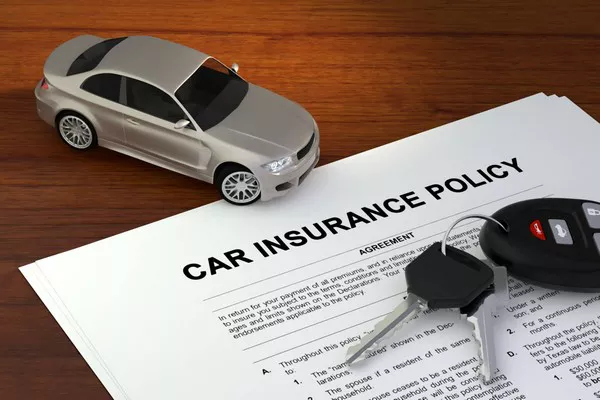In the intricate realm of car insurance, understanding the nuances of coverage options is crucial for making informed decisions. This article delves into the specifics of third-party property damage car insurance, unraveling its features, benefits, and considerations. Whether you’re a seasoned driver seeking additional insights or a newcomer navigating the world of auto insurance, this guide empowers you to grasp the essentials of third-party property damage coverage.
1. The Foundation: Unveiling Third-Party Property Damage Insurance
At its core, third-party property damage car insurance serves as a protective shield, offering coverage for damages you may cause to someone else’s property while operating your vehicle.
Property Protection:
This type of insurance primarily covers the costs associated with damage to another person’s property resulting from a car accident where you are at fault. This could include repairs to the other vehicle, structures, or any other property affected by the incident.
Exclusions:
It’s important to note that third-party property damage insurance typically does not cover damages to your own vehicle. For coverage related to your own vehicle, additional types of insurance, such as comprehensive or collision coverage, may be necessary.
Legal Requirements:
In many regions, having some form of third-party liability insurance is a legal requirement for drivers. It ensures financial responsibility for damages caused to others while operating a vehicle.
2. The Appeal of Third-Party Property Damage Coverage
One of the key attractions of third-party property damage insurance is its cost-effectiveness, making it an appealing option for drivers seeking essential coverage without breaking the bank.
Affordable Premiums:
Compared to comprehensive or collision coverage, third-party property damage insurance often comes with more affordable premiums. This affordability allows drivers to meet legal requirements without a substantial financial burden.
Budget-Friendly Approach:
For individuals driving older or less valuable vehicles, prioritizing third-party property damage coverage can be a pragmatic approach. It provides essential protection while aligning with budget constraints.
Customization Options:
Drivers often have the flexibility to customize their coverage by combining third-party property damage insurance with other types of coverage based on their specific needs and preferences.
3. Coverage Limits
While third-party property damage insurance offers cost-effective coverage, understanding coverage limits is vital for ensuring adequate protection in the event of an accident.
Limit Selection:
Policyholders typically have the option to choose coverage limits based on their comfort level and risk tolerance. Higher coverage limits may result in slightly higher premiums but provide greater financial protection.
Property Valuation:
Consider the potential costs associated with property damage when selecting coverage limits. High-value properties, such as luxury vehicles or structures, may necessitate higher limits to ensure comprehensive coverage.
Liability Protection:
Adequate coverage limits not only protect your financial interests but also help safeguard against potential legal liabilities resulting from property damage claims.
4. Supplementary Benefits
Third-party property damage insurance may come with supplementary benefits and features that enhance its overall appeal and utility for policyholders.
Legal Liability Coverage:
In addition to property damage, this type of insurance may offer legal liability coverage. This can include protection against legal expenses if you’re taken to court as a result of an accident.
Emergency Repairs:
Some policies may cover emergency repairs to the other party’s property, allowing for swift resolution and minimizing inconveniences for all parties involved.
Rental Car Coverage:
Certain policies may provide rental car coverage, ensuring that you have alternative transportation while your vehicle is undergoing repairs.
5. Considerations for Comprehensive Protection
While third-party property damage insurance offers valuable protection, drivers should assess their overall coverage needs and consider complementing it with other types of insurance for comprehensive protection.
Comprehensive Coverage:
Adding comprehensive coverage to your insurance portfolio can protect your own vehicle from non-collision incidents, such as theft, vandalism, or natural disasters.
Collision Coverage:
Collision coverage covers the cost of repairs to your vehicle in the event of an accident, regardless of fault. Combining third-party property damage insurance with collision coverage can provide more extensive protection.
Personal Injury Protection (PIP):
Depending on your region, personal injury protection coverage may be beneficial, covering medical expenses and lost wages for you and your passengers, regardless of fault.
6. Policy Shopping
When seeking third-party property damage insurance, exploring various insurance providers and policy options is essential for securing optimal coverage at competitive rates.
Comparing Premiums:
Request quotes from different insurance providers to compare premiums and identify cost-effective options. Consider factors beyond price, such as customer service, reputation, and coverage flexibility.
Policy Reviews:
Periodically review your insurance policy to ensure it aligns with your current needs. Life changes, such as acquiring a new vehicle or relocating, may necessitate adjustments to your coverage.
Discount Opportunities:
Inquire about potential discounts offered by insurance providers. Some may provide discounts for safe driving records, multiple policies, or completion of defensive driving courses.
Conclusion
In conclusion, third-party property damage car insurance serves as a foundational component of responsible driving, offering protection against potential property damage liabilities. Its cost-effectiveness, coupled with customizable coverage options, makes it an attractive choice for many drivers. As you navigate the complexities of auto insurance, may your understanding of third-party property damage coverage empower you to make informed choices, ensuring your driving journey is not only responsible but also financially secure. Here’s to safe travels, comprehensive protection, and the confidence that your choice in insurance aligns seamlessly with your unique needs and circumstances.


